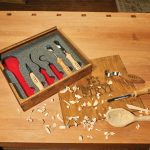We may receive a commission when you use our affiliate links. However, this does not impact our recommendations.
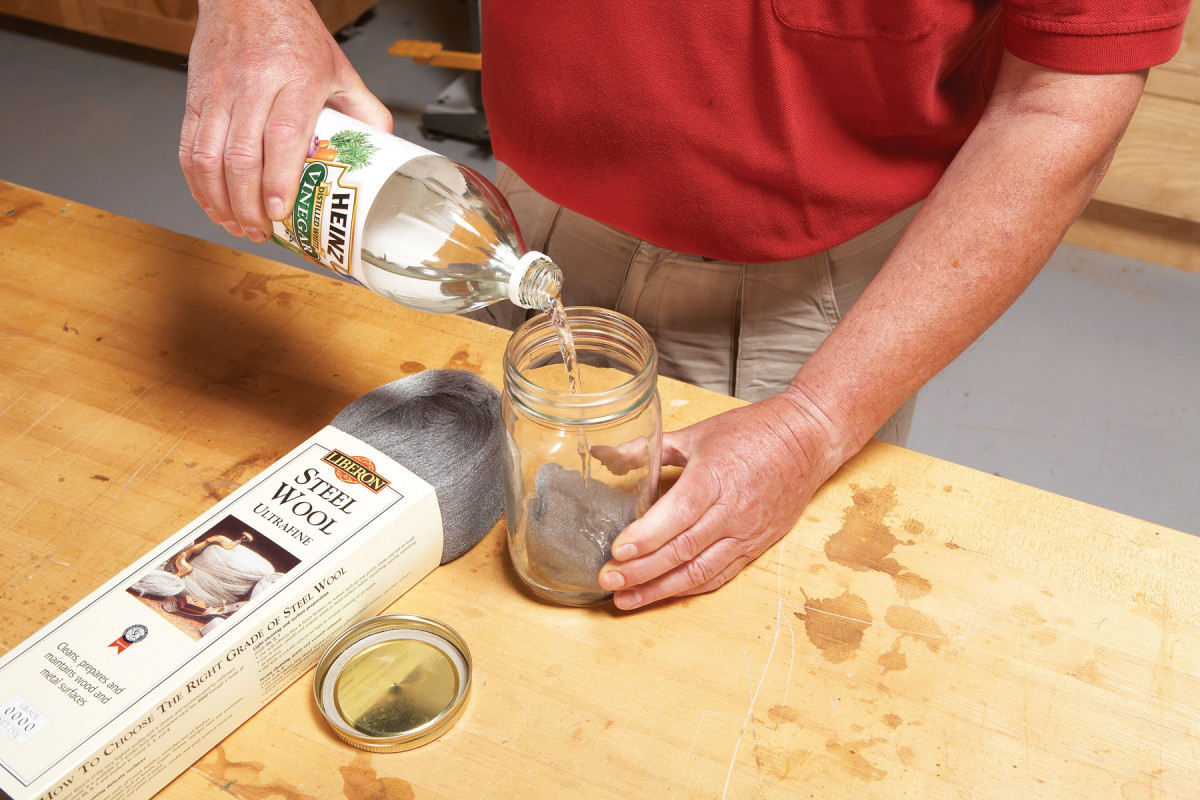
1. Dissolve steel wool in vinegar to make the first of two solutions you’ll need. The pad should completely dissolve in about one week.
A sure-fire recipe for turning any wood deep black.
Remember the old ad slogan, “better living through chemistry”? When it comes to turning wood black—a process called ebonizing—I prefer the chemical approach, which uses solutions made from vinegar, steel wool and tannic acid. Watching them transform an ordinary wood, such as the yellow poplar I’m using here, is magical.
Other methods of ebonizing (dye, ink and paint) use pigments, which can obscure the wood’s grain. The chemical technique leaves an absolutely transparent layer of black. You can still see the wood’s figure and character, particularly after you apply a topcoat.
Woodworkers have long known that rusty, acidic water turns some wood black. Woods that are high in tannic acid, such as oak, walnut and mahogany, work best. The technique I’ll show you adds tannic acid to the wood, so you can ebonize virtually any species. I can’t take credit for this idea, though; it’s been a finisher’s trick for a long time.
Mixing the chemicals
The two solutions can be stored and used over and over. The first is more or less liquid rust, which you make with white vinegar and steel wool (Photo 1). For the best results, use Heinz white vinegar and Liberon 4/0 steel wool. This steel wool works well because it doesn’t contain oil, but you could also use regular steel wool and wash out its oil with a detergent. Cover the jar with a lid, then puncture the lid with a small hole to let gas escape. Set the jar aside for a week or so.
Eventually, the pad will dissolve and the formerly clear liquid will turn a dark reddish brown, with a black scum on top. Place a coffee filter in a funnel and pour this gunk through the filter into a new container. Repeat the process two or three times, using new filters, to remove all the solids from the solution.
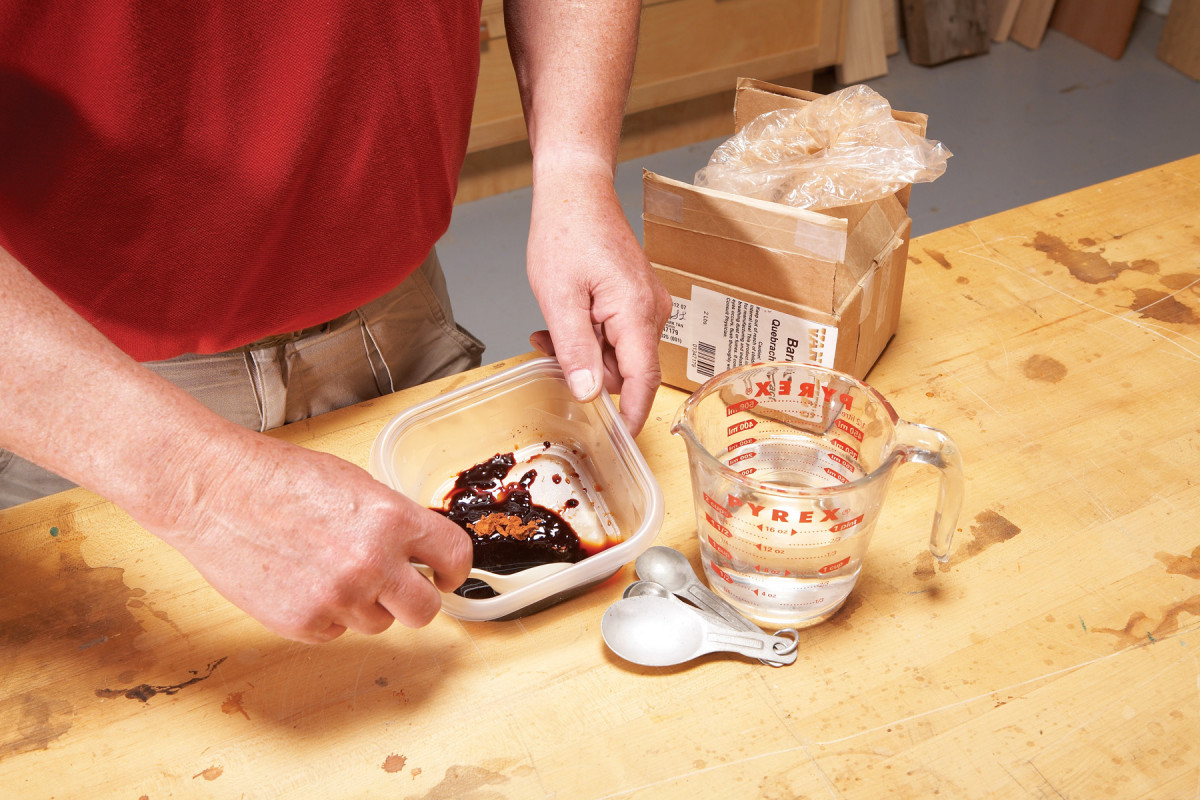
2. Make tannic acid for the second solution. Mix dry powdered tannin with a small amount of water to make a paste, then add more water.
The second solution, tannic acid, is made with dry powdered tannin. It’s not expensive, but unfortunately it’s not available in a small quantity. Rather than be stuck with a lifetime’s supply, I’ve shared the surplus with a dozen woodworking friends.
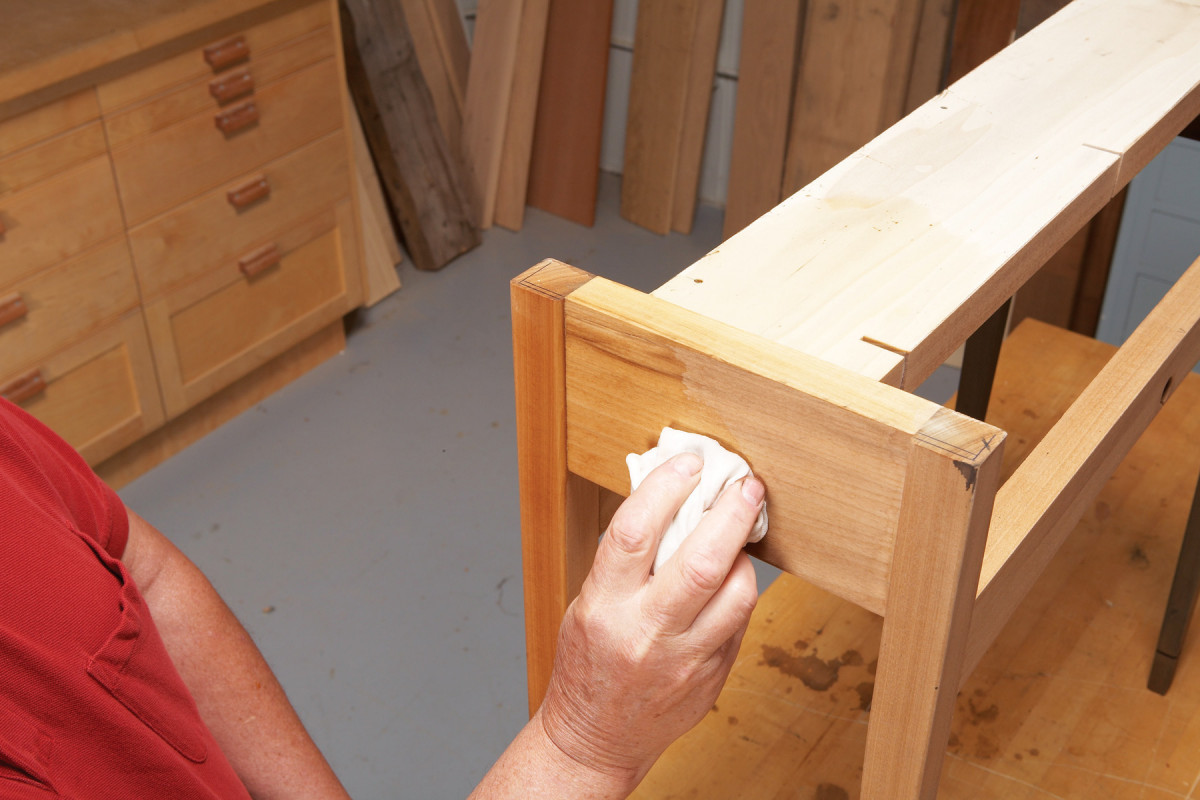
3. Raise the grain before you begin the ebonizing process. Wet the wood’s surface with a damp rag or sponge.
To mix the powder, place 1 heaping tablespoon in a disposable container and add a small amount of water (Photo 2). Stir until the powder forms a paste, then add 1 pint of hot tap water. Transfer the solution to a jar or bottle. It can be used right away.
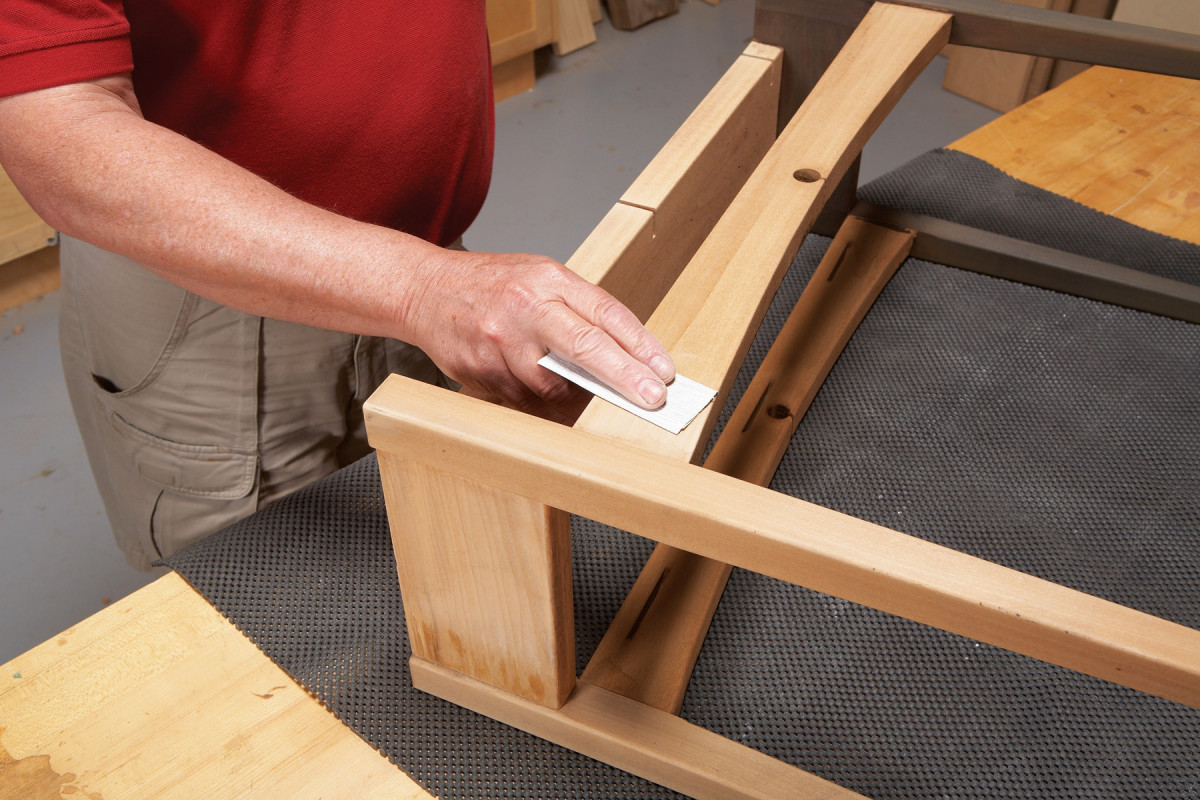
4. Sand with fine paper to remove any fibers sticking up from the wood’s surface.
The next step is to raise the wood’s grain with plain water (Photo 3). This is important to do now, before applying either solution, because you won’t be able to sand the wood during the ebonizing process. After the wood dries, sand off any fuzz you may feel with 280 or 320 grit paper (Photo 4). I usually repeat this process two or three times.
Application
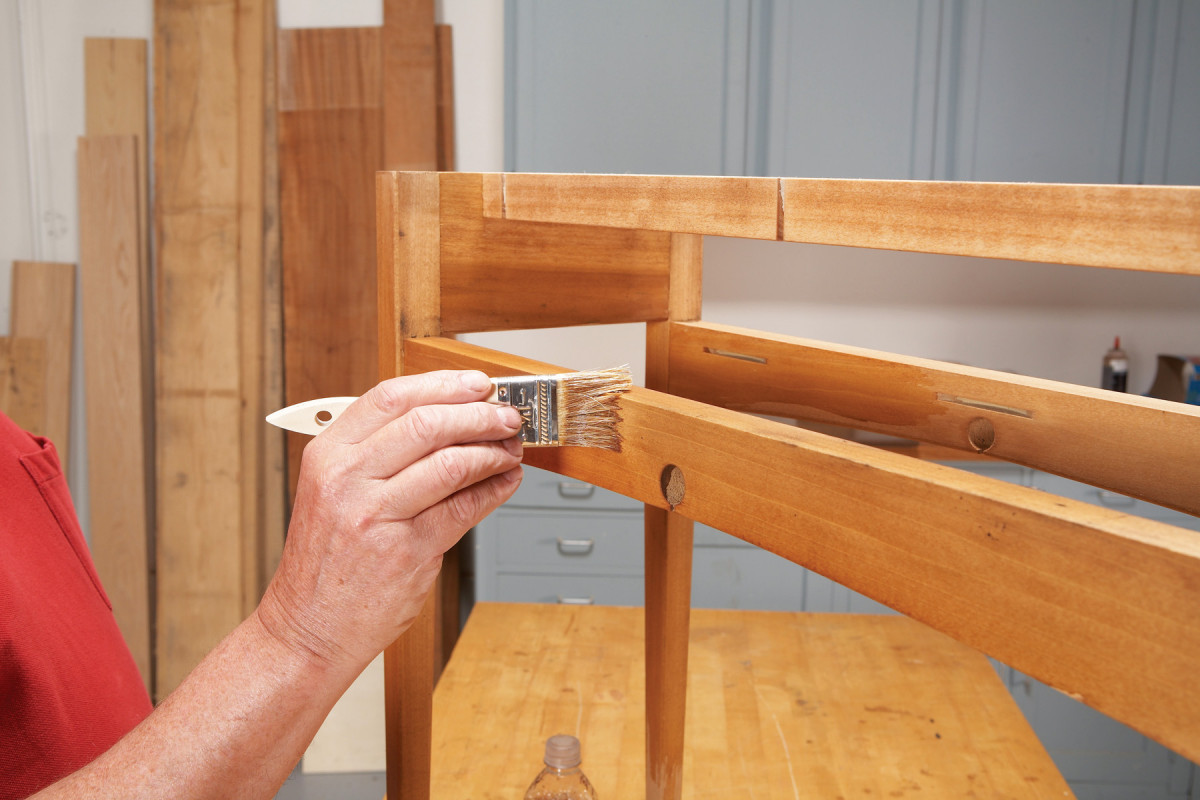
5. Brush on the tannic acid solution and let it dry.
It’s clear sailing from here. First, pour a small amount of the tannic acid solution into a shallow container and brush it on your project (Photo 5). Make sure every bit of the surface is covered. Let the wood dry.
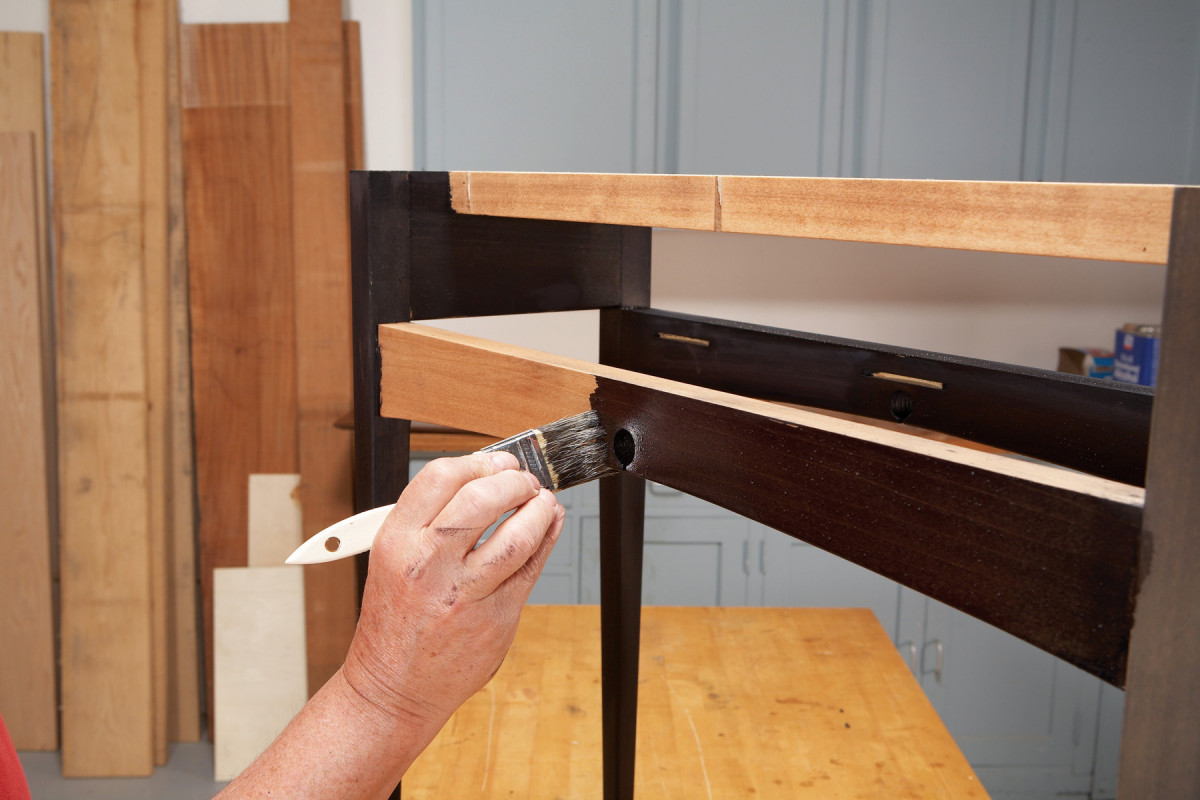
6. Apply the vinegar and steel wool solution. The surface will turn a bluish black right away.
Next, pour a small amount of the steel wool and vinegar solution into a separate container. Using a different brush, apply the solution to the wood (Photo 6). Almost immediately, the wood will turn a bluish black. Don’t pour the excess solution back into your original container, as it will be contaminated by the tannic acid. Again, let the wood dry.Finally, apply another coat of tannic acid, using a rag to avoid brush marks (Photo 7). Voila! You’ll get a rich, deep black.
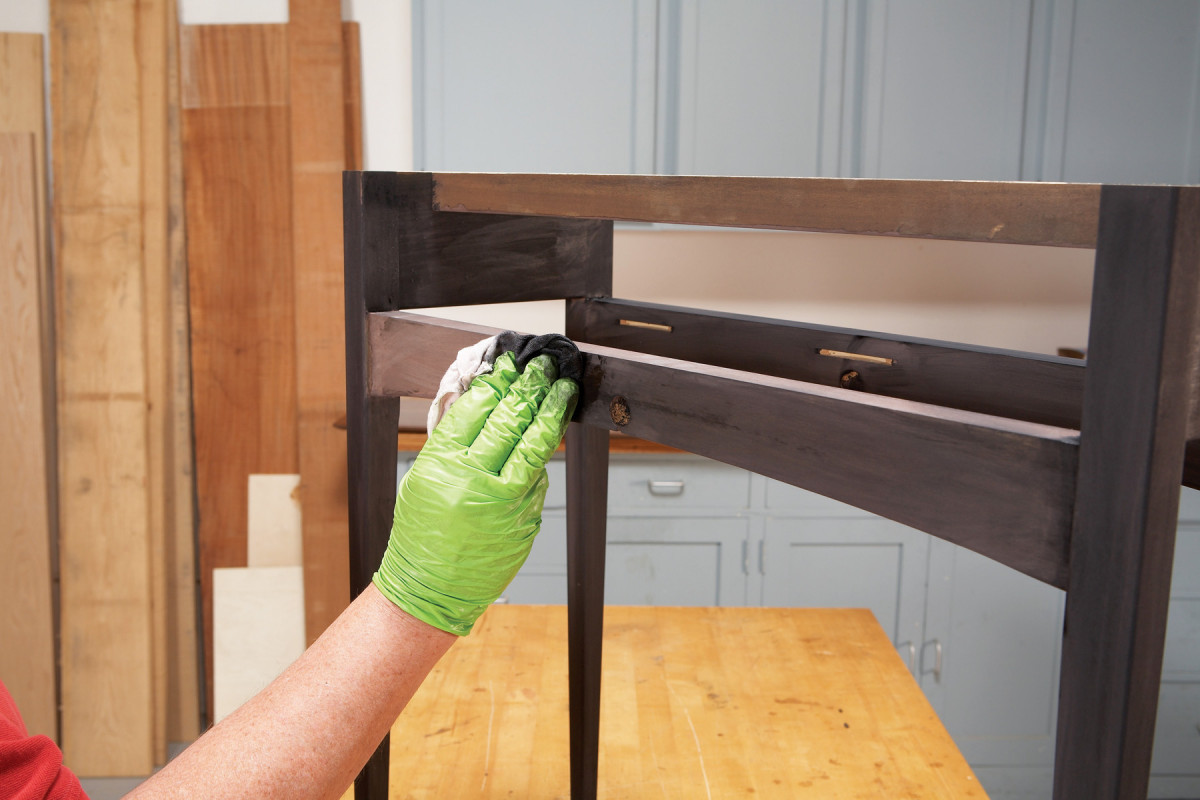
7. Apply more tannic acid with a rag. This turns the wood a deep, transparent black. After it dries, you’re ready for a topcoat.
Dispose the surplus tannic acid (it will be contaminated, too), and let the wood dry a day or two. You’re ready to apply a clear finish.
Here are some supplies and tools we find essential in our everyday work around the shop. We may receive a commission from sales referred by our links; however, we have carefully selected these products for their usefulness and quality.








